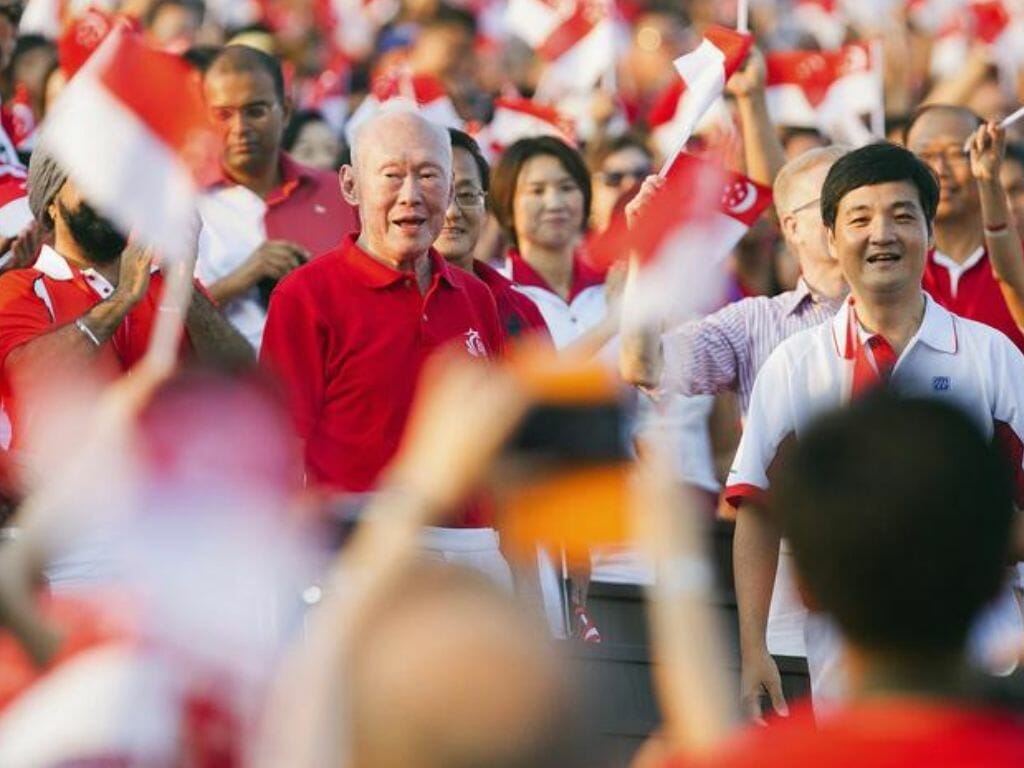10 Facts About Singapore’s Founding That They Didn’t Teach You in School

No Time to Read? Here’s a Snappy Summary of This Article
- Mysterious Beginnings: Singapore’s origins shrouded in legends, from a prince to a fishing village’s humble start.
- Colonial Chess Game: The island passed through Dutch and Portuguese hands before the British claimed it as a trading post.
- Multicultural Roots: Early Singapore was a diverse melting pot, fostering cultural harmony long before it became a nation.
- Dark Side of Prosperity: Rapid growth came with problems, including opium dens and gang wars in the 19th century.
- Forgotten Revolutionaries: Learn about unsung heroes and resistance fighters who challenged British rule.
- Fateful Surrender: Discover the shocking details of Singapore’s fall to the Japanese during World War II.
Table of Contents
- No Time to Read? Here’s a Snappy Summary of This Article
- 1. The True Role of William Farquhar
- 2. The Forgotten Indigenous Communities
- 3. Temenggong Abdul Rahman’s Integral Contribution
- 4. The Secret Treaty of 1818
- 5. The Influence of Chinese Secret Societies
- 6. The Demise of Old Singapore
- 7. The Importance of Slave and Coolie Labour
- 8. Early Women Pioneers
- 9. The Secret British Fear of American Involvement
- 10. The Subversive Role of Newspapers and Publications
- Meanwhile, Check Out Tropika Club’s Ecosystem of Websites
Introduction
History textbooks often condense events and gloss over complexities to fit a standardized curriculum. But Singapore’s rich and intricate history is far more than what you’ve read in school textbooks. From indigenous communities to geopolitical maneuvers, there are numerous angles from which one can understand how modern Singapore came into being. In this feature, Tropika Club Magazine is pleased to bring you 10 astonishing facts about Singapore’s founding that you probably haven’t heard of before.

1. The True Role of William Farquhar
Contrary to popular belief, Sir Stamford Raffles was not solely responsible for establishing modern Singapore. William Farquhar, Raffles’ right-hand man, played a pivotal role in the island’s development. Farquhar took charge of the day-to-day operations and was responsible for Singapore’s initial growth as a trading post. Despite this, his contribution is often overshadowed by Raffles, primarily due to their differing visions for the colony and a falling out that led to Farquhar’s eventual marginalization in historical accounts.

2. The Forgotten Indigenous Communities
Long before the British arrived, Singapore was already home to indigenous communities like the Orang Laut and Malays. These groups had established trading relationships with neighbouring kingdoms and had a profound influence on Singapore’s early identity. Unfortunately, their roles are often marginalized in mainstream narratives which focus predominantly on colonial contributions to the country’s development.

3. Temenggong Abdul Rahman’s Integral Contribution
Temenggong Abdul Rahman was the local Malay ruler who played a crucial part in Singapore’s establishment as a British port. He consented to the British presence in exchange for military protection against Dutch forces and his rivals in the Malay Peninsula. This alliance was vital for the British, who sought a strategic location along their trade route to China. Abdul Rahman’s role in Singapore’s founding remains an essential yet often overlooked aspect of the story.

4. The Secret Treaty of 1818
Before the official founding in 1819, the British and Dutch had signed the Anglo-Dutch Treaty of 1814, which sought to resolve colonial disputes in Southeast Asia. However, this did not cover Singapore. A secret agreement was later forged between the Dutch and the Bugis, who were opposed to the British. This intrigue added another layer of complexity to the political landscape that would shape Singapore’s early years.

5. The Influence of Chinese Secret Societies
Chinese secret societies wielded considerable influence during Singapore’s formative years. Groups like the Ghee Hin and Hai San were deeply involved in social, political, and even commercial affairs. They helped their members assimilate into the new colony and even mediated conflicts. Although these societies later turned into sources of unrest, they played an essential role in forming Chinese community bonds and contributing to the cultural mosaic of Singapore.

6. The Demise of Old Singapore
Before Raffles’ arrival, Singapore was known as Temasek and had its own period of prosperity before falling into decline due to various factors, including wars and trade route changes. The transition from Temasek to Singapore is an intriguing episode that symbolizes the ever-changing fortunes of this island at the crossroads of civilizations.
_
Read Also:
Top 10 Best American Restaurants in Singapore with Vegetarian-Friendly Cuisine
_

7. The Importance of Slave and Coolie Labour
Much of Singapore’s early development was built on the back of slave and coolie labour. Men from India, China, and the Malay Archipelago were subjected to inhumane conditions to build the infrastructure that would lay the foundation for modern Singapore. This unsettling aspect of Singapore’s history is rarely emphasized, but it played a significant role in the nation’s rise as a trade and commercial hub.

8. Early Women Pioneers
The contributions of women in early Singapore are another overlooked aspect. Women like Hajjah Fatimah and Agnes Joaquim made their mark through philanthropy and innovation. Hajjah Fatimah, for example, was a successful businesswoman who contributed to social welfare, while Agnes Joaquim was the horticulturist behind Singapore’s national flower, the Vanda Miss Joaquim. These pioneering women offer another dimension to the understanding of Singapore’s multi-faceted history.

9. The Secret British Fear of American Involvement
During Singapore’s early days, the British were wary of American traders establishing a stronghold on the island. Fearing that American influence would undermine their control, they attempted to monopolize trade by implementing policies that favored British companies. This little-known geopolitical tension provides valuable context for Singapore’s early trade policies.

10. The Subversive Role of Newspapers and Publications
Newspapers like the Singapore Free Press were not just platforms for news but also tools for shaping public opinion and promoting the colonial agenda. Conversely, anti-colonial publications like the Shonan Times, published during the Japanese Occupation, served to challenge the status quo. The press played a subversive role in the socio-political landscape, influencing not just local sentiments but also foreign perception of Singapore.
Conclusion
To conclude, the story of Singapore’s founding is far more intricate than what we learned in school. By examining these lesser-known facets, we gain a more holistic understanding of how Singapore transformed into the nation it is today. And perhaps, with this newfound knowledge, we can better appreciate the complexities and the multitude of characters that have shaped this island nation we call home.

Frequently Asked Questions (FAQ)
1. Q: Who were the early inhabitants of Singapore before British colonization?
A: Singapore’s pre-colonial history includes the Orang Laut (Sea People) and the Malays, shaping its rich heritage.
2. Q: Can you elaborate on the legend of Sang Nila Utama and the lion?
A: Sang Nila Utama’s legendary encounter with a lion inspired Singapore’s name, though lions never roamed here.
3. Q: Were there any significant events or figures during Singapore’s colonial period?
A: Explore the intriguing colonial era stories, including the influence of Stamford Raffles and William Farquhar.
4. Q: How did World War II impact Singapore’s history?
A: Learn about the Japanese occupation and the hardships faced by Singaporeans during this pivotal time.
5. Q: Were there any local uprisings or resistance movements against colonial rule?
A: Discover lesser-known heroes who fought for Singapore’s independence through resistance and activism.
6. Q: Can you share insights into Singapore’s road to independence and nationhood?
A: Delve into the historical events and key figures that led to Singapore’s emergence as a sovereign nation.

Have an Article to Suggest?
Tropika Club is always looking for new and exciting content to feature in their magazine and they value the input of our readers. If you have any noteworthy content or articles that you believe would be a great addition to Tropika Club’s magazine, we are open to suggestions and encourage you to reach out to us via email at [email protected]. By doing so, Tropika Club values your expertise and knowledge in the matter and appreciates your willingness to help. We will review your recommendations and update our list accordingly
Meanwhile, Check Out Tropika Club’s Ecosystem of Websites

Tropika Club Magazine – Tropika Club Magazine is a Singapore-based publication that features articles on a wide range of topics with a focus on local businesses and content for the region. The magazine emphasizes supporting local businesses through its #SupportLocal initiative, which includes coverage of everything from neighborhood hawker stalls to aesthetic clinics in town. In addition to highlighting local businesses, Tropika Club Magazine also covers a variety of local content, including beauty, lifestyle, places, eats, and what’s on in Singapore and the Asia Pacific region.
Tropika Club Deals – Tropika Club Deals is a leading online deals and voucher shopping site in Singapore, offering amazing discounts on beauty, wellness, and fitness products and services. It’s the perfect platform for customers who want to discover the best deals without having to commit to a specific appointment date and time. These deals are available at major beauty stores, facial salons, hair salons, and other brands in Singapore, with no minimum spend required. Choose from guaranteed discounted deals in the categories of hairstyling, hair removal, facial & aesthetics, body slimming, brows & lashes, nails & makeup, massage & spa or fitness & wellness. Tropika Club Deals is also ideal for customers who want to buy vouchers as gifts or to use for the future. So whether you’re looking to save money on your next haircut or want to treat yourself to a relaxing massage, Tropika Club Deals has got you covered with the best voucher and coupon deals in Singapore!




